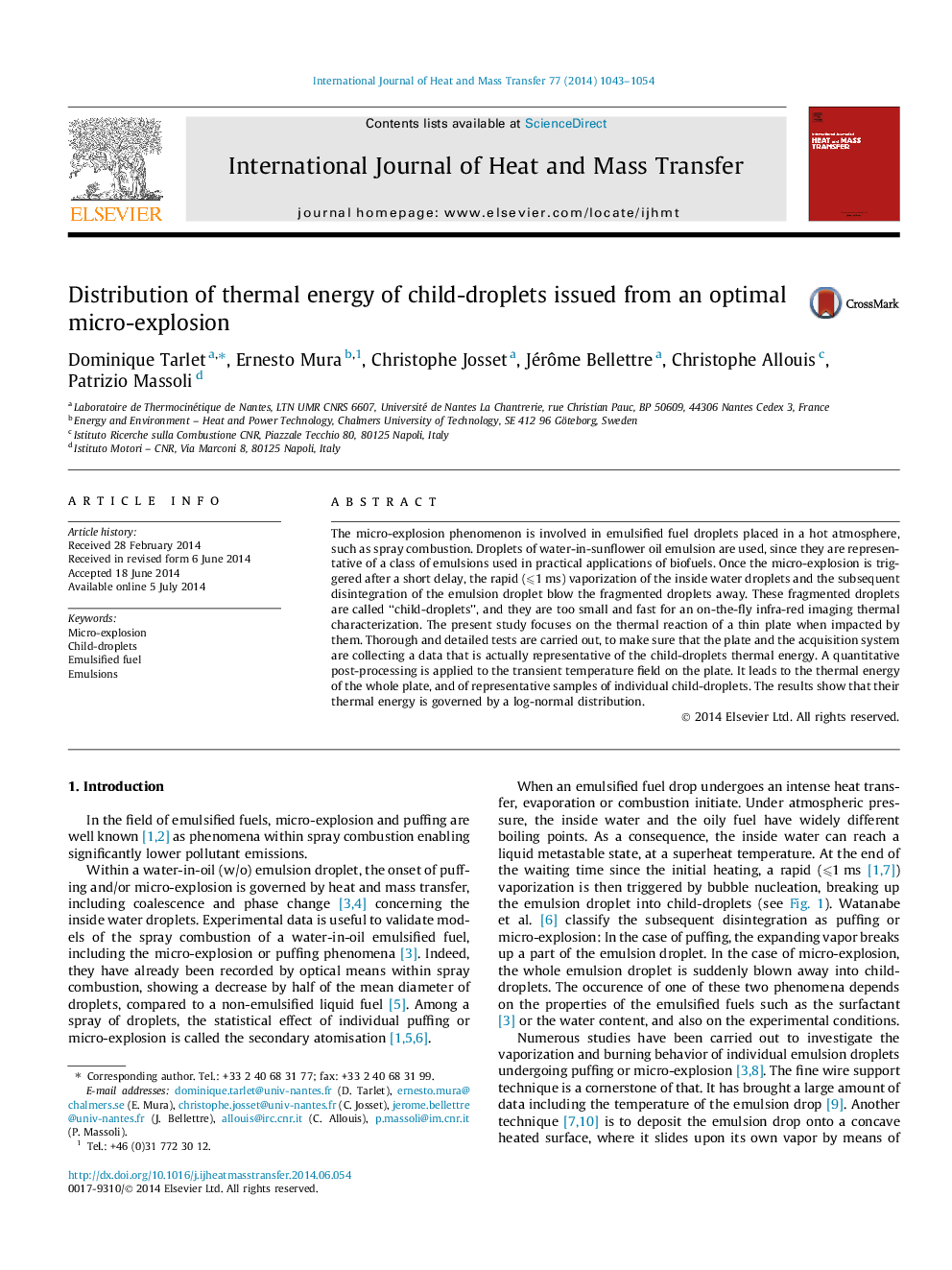| Article ID | Journal | Published Year | Pages | File Type |
|---|---|---|---|---|
| 657854 | International Journal of Heat and Mass Transfer | 2014 | 12 Pages |
The micro-explosion phenomenon is involved in emulsified fuel droplets placed in a hot atmosphere, such as spray combustion. Droplets of water-in-sunflower oil emulsion are used, since they are representative of a class of emulsions used in practical applications of biofuels. Once the micro-explosion is triggered after a short delay, the rapid (⩽⩽1 ms) vaporization of the inside water droplets and the subsequent disintegration of the emulsion droplet blow the fragmented droplets away. These fragmented droplets are called “child-droplets”, and they are too small and fast for an on-the-fly infra-red imaging thermal characterization. The present study focuses on the thermal reaction of a thin plate when impacted by them. Thorough and detailed tests are carried out, to make sure that the plate and the acquisition system are collecting a data that is actually representative of the child-droplets thermal energy. A quantitative post-processing is applied to the transient temperature field on the plate. It leads to the thermal energy of the whole plate, and of representative samples of individual child-droplets. The results show that their thermal energy is governed by a log-normal distribution.
